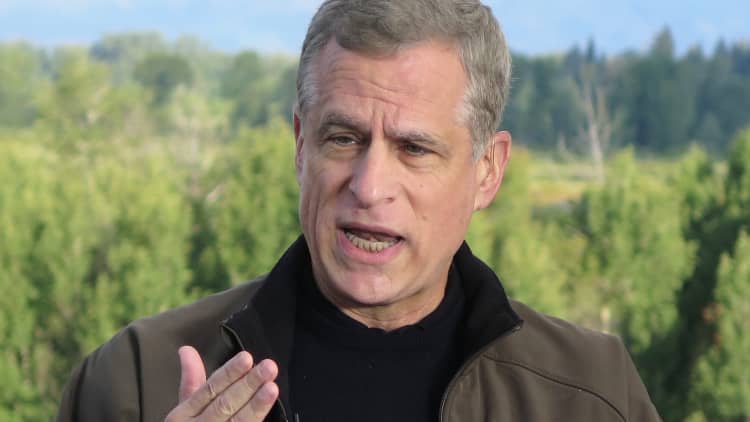
Economists already had been prepared for a weak jobs number in September, and ended up getting more than what they bargained for.
However, it's unlikely to last.
In fact, there's good reason to believe that when all is said and done, the jarring loss of 33,000 jobs for the month, as reflected in a Bureau of Labor Statistics report Friday, will change significantly.
The reason is the opaque process the bureau uses to compile the count.
The BLS uses two very different measures to put together the report: The establishment survey, which counts the total jobs according to a questionnaire some 147,000 businesses get, and the household survey, which questions homes to find out how many are at work. The former uses more estimates, adjustments and general economic voodoo than the latter, but is the one more closely followed on Wall Street.
One key difference between the two is that the establishment survey measures jobs while the household survey tallies the actual level of people at work — so one person holding two jobs would only count once.
The establishment survey provides a bleak picture for September jobs. The household survey does just the opposite.
According to the household survey, a stunning 906,000 more people were at work in September than August. The total employment level showed 154.3 million Americans with jobs, easily a record.
At the same time, unemployment rolls fell by 331,000, which itself is not a record but is the lowest since July 2001.
Finally, the total labor force surged by 575,000 to its highest level ever, the employment-to-population ratio rose to 60.4 percent, its best level since January 2009, and the labor force participation rate jumped to 63.1 percent, the highest since March 2014. That all coincided with an unemployment rate decline to 4.2 percent, the lowest in 16½ years.
And then there's wages — average hourly earnings gained 2.9 percent, or 12 cents an hour, tied with July for the biggest monthly jump since June 2007.
If it all sounds like a jobs market that is nowhere near as bad as a negative headline number would indicate, that's not an accident.
"You had a pretty nice pickup of people entering the jobs market and people getting jobs. That's a really good combination," said Beth Ann Bovino, U.S. chief economist at S&P Global Ratings. "That to me is reason to believe that this jobs market is a lot more upbeat than 33,000 lost jobs in that establishment employment report."
Bovino believes businesses wiped out by the hurricanes may not have had the time or ability to respond to the BLS inquiry, while households could have been better able to communicate. Workers not able to go to their jobs totaled nearly 1.5 million, the highest since January 1996.
Markets seemed relatively unfazed by the report, with stocks trading right around even through the morning and most on Wall Street willing to dismiss the negative parts of the September report and wait for more data.
Bovino said the ADP/Moody's Analytics count of private payrolls released Wednesday, showing an addition of 135,000, could be a more accurate picture when all is said and done.
It wouldn't be unusual for the BLS to substantially modify an initial count — August was revised up 14,000 to 169,000 and July cut 51,000 to 138,000 — and even then future months are likely to show a rebound, particularly due to weather-related events. In August 2005, when Hurricane Katrina hit, payroll growth was just 67,000 in September but rose to 341,000 in November. Hurricane Charley in August 2004 saw payrolls gain 162,000 in September then 346,000 in October.
"I suspect that household survey is probably a stronger indication of what the jobs market is than the establishment side," Bovino said.
WATCH: Dallas Fed President Robert Kaplan talks jobs and the economy



